Complete Solutions to Problems Based On Mixed Concepts of chapter GEOMETRICAL OPTICS of Class 12 book with complete answers and questions
| Class 12 | PHYSICS |
| Chapter | GEOMETRICAL OPTICS |
| A2Z | Problems Based On Mixed Concepts |
| Number Of Questions | 37 |
| Academic Year | 2023-24 |
A fish is vertically below a flying bird moving vertically down toward water surface. The bird will appear to the fish to be
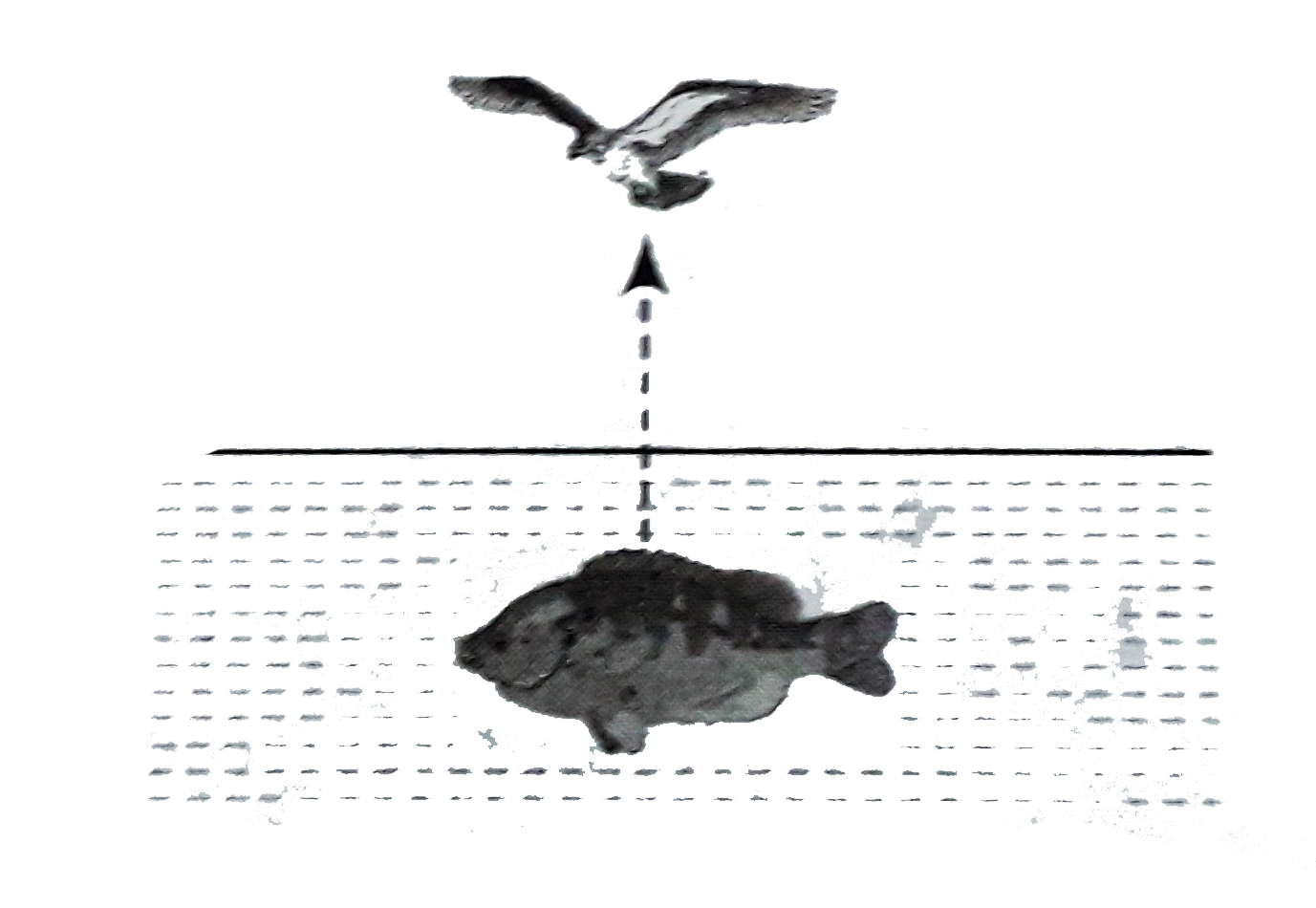 03:20View Solution
03:20View SolutionA fish rising up vertically toward the surface of water with speed `3ms^(-1)` observes a bird diving down vertically towards it with speed `9ms^(-1)` . The actual velocity of bird is
 02:28View Solution
02:28View SolutionWhat is the angle of incidence for an equilateral prism of refractive index `sqrt(3)` so that the ray si parallel to the base inside the prism?
03:49View SolutionA plano-convex lens when silvered on the plane side behaves like a concave mirror of focal length 60 cm. However when silvered on the convex side it behaves like a concave mirror of focal length 20 cm. Then the refractive index of the lens
04:55View SolutionA ray of light passes from vacuum into a medium of refractive index `mu`. If the angle of incidence is twice the angle of refraction, then the angle of incidence is
02:09View SolutionA combination of two thin lenses with focal lengths `f_(1)` and `f_(2)` respectively forms and image of distant object at distance `60cm` when lenses are in contact. The position of this image shifts by `30 cm` towards the combination when two lenses are separated by `10 cm`. The corresponding values of `f_(1)` and `f_(2)` are
05:08View SolutionA point source `S` is placed at the bottom of different layers as shown in figure. The refractive index of bottom-most layer is `mu_(0)`. The refractive index of any other upper layer is
`mu(n)=mu_(0)-(mu_(0))/(4pi-18)` where `n=1,2,.....`
A ray of light starts from the source `S` as shown. Total internal reflection takes place at the upper surface of the layer having `n` equal to
 03:52View Solution
03:52View SolutionA plane mirrorr is placed at origin parallel of `y-`axis, facing the positive `x-`axis. An object starts from `(2m, 0,0)` with a velocity of `(2hat(i) +2hat(j))m//s` . The relative velocity of image with respect to object is along
03:39View SolutionLight is incident normally on face AB of a prism as shown in Figure. A liquid of refractive index `mu` is placed on face AC of the prism. The prism is made of glass of refractive indices `3//2` . Find the limits of `mu` for which total internal reflection takes place on the face AC.
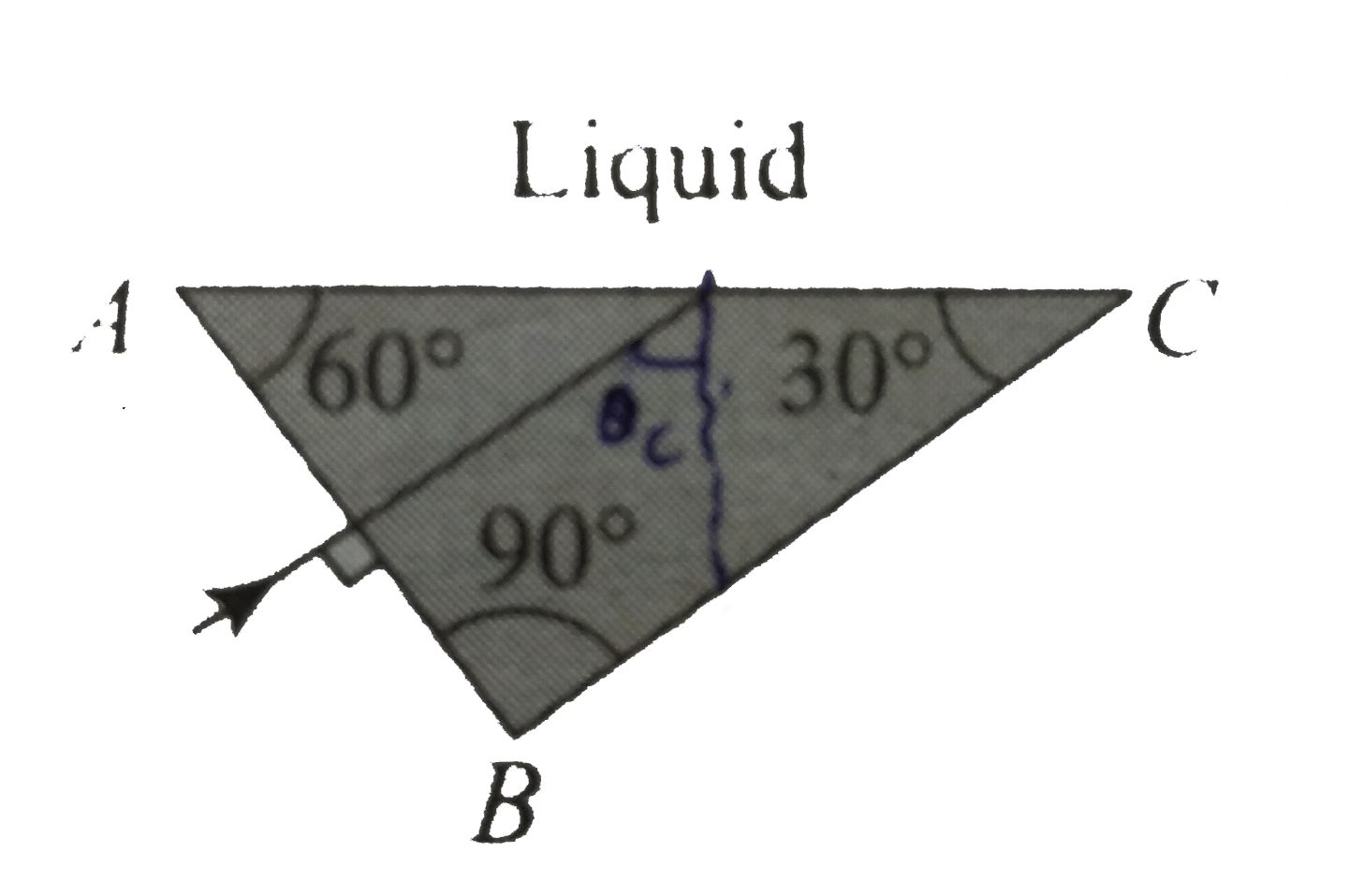 04:26View Solution
04:26View SolutionA point source of light B is placed at a distance L in front of the centre of a mirror of width `d` hung vertically on a wall. A man walks in front of the mirror along a line parallel to the mirror at a distance 2L from it as shown in fig. The greatest distance over which he can see the image of the light source in the mirror is
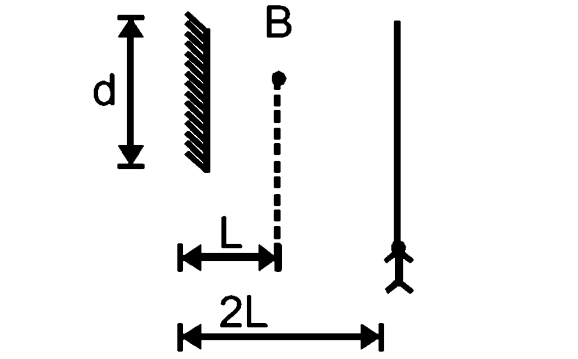 04:55View Solution
04:55View SolutionTwo plane mirrors A and B are aligned parallel to each other, as shown in the figure. A light ray is incident at an angle 30degree at a point just inside one end of A. The plane of incidence coincides with the plane of the figure. The maximum number of times the ray undergoes reflections (including the first one) before it emerges out is
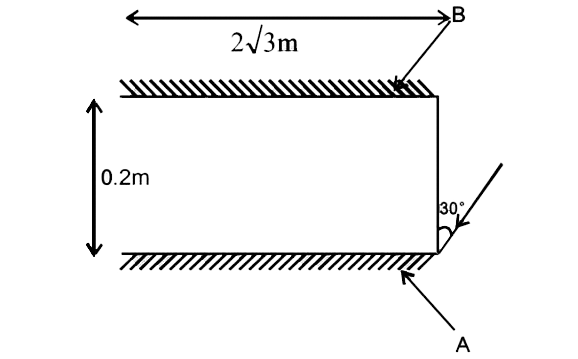 03:14View Solution
03:14View SolutionA rectangular slab ABCD, of refractive index `n_1` , is immersed in water of refractive index `n_2(n_1 lt n_2)`. A ray of light is incident at the surface AB of the slab as shown in Fig. Find the maximum value of angle of incidence `alpha_(max)`, such that the ray comes out only from the other surface CD.
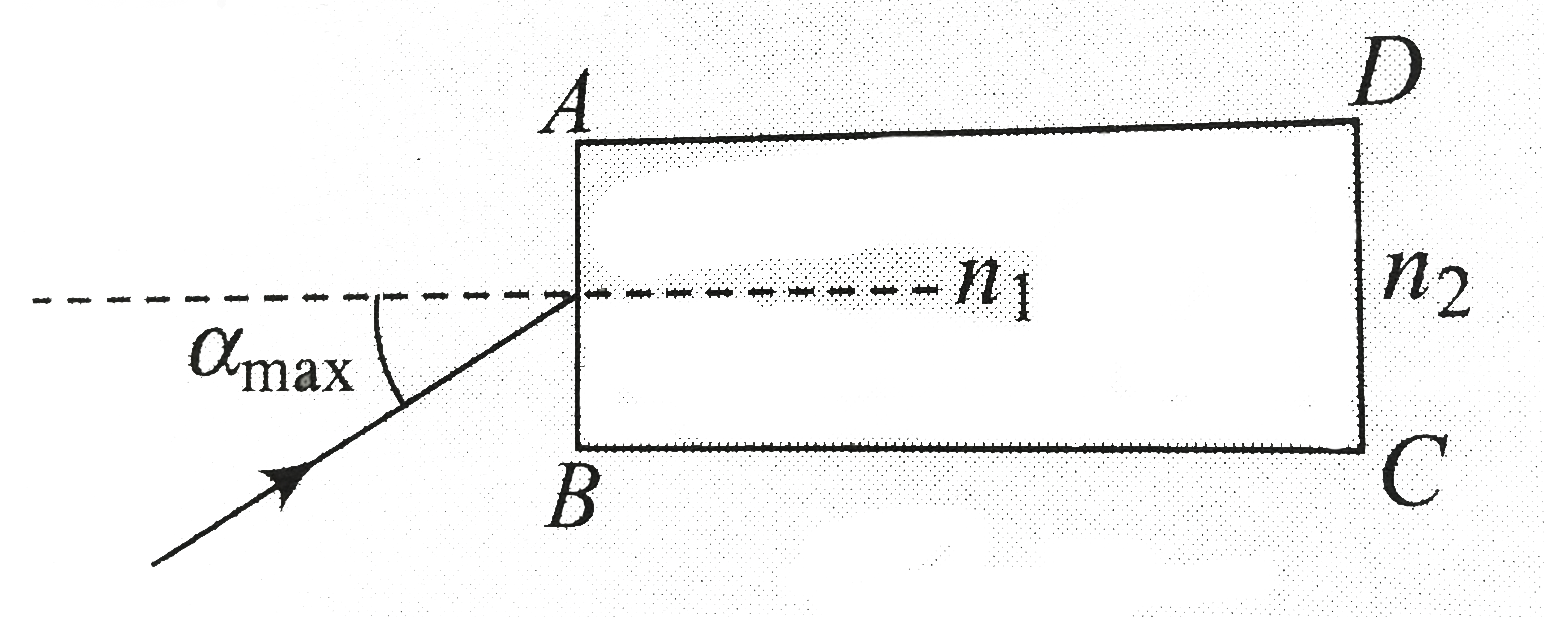 05:57View Solution
05:57View Solution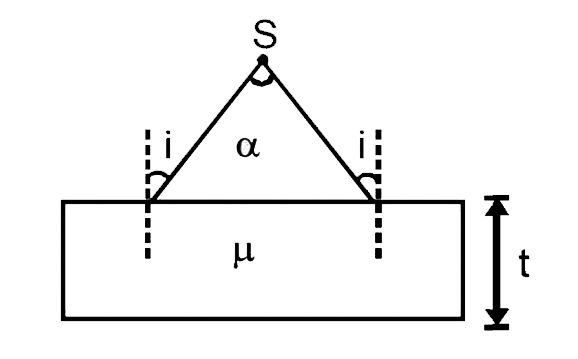
A diverging beam of light from a point source S having divergence angle `alpha`, falls symmetrically on a glass slab as shown. The angles of incidence of the two extreme rays are equal. If the thickness of the glass slab is t and the refractive index n, then the divergence angle of the emergent beam is02:56View SolutionAn observer can see through a pin-hole the top end of a thin rod of height h, placed as shown in the figure. The beaker height is 3h and its radius h. When the beaker is filled with a liquid up to a height 2h, he can see the lower end of the rod. Then the refractive index of the liquid is
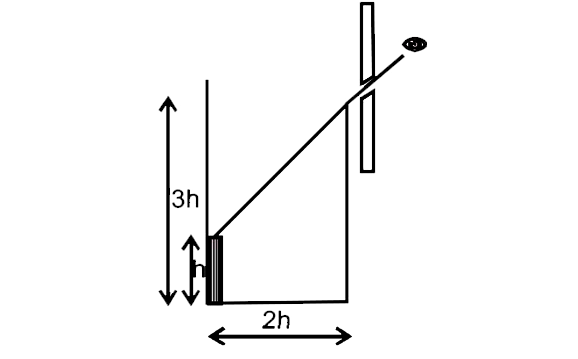 06:39View Solution
06:39View SolutionA ray of light is incident at the glass-water interface at an angle I, it emerges fimally parallel to the surface of water, the the value of `mu_g` would be
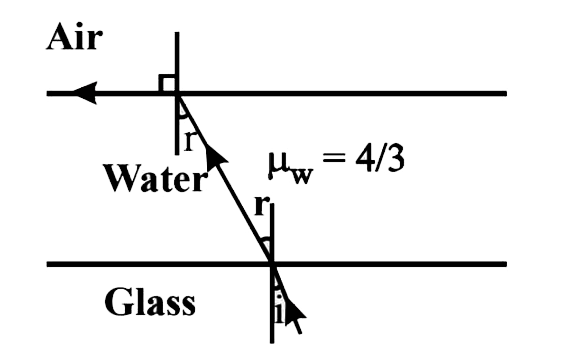 02:16View Solution
02:16View SolutionA glass prism of refractive index 1.5 is immersed in water (refractive index 4/3). A light beam incident normally on the face AB is totally reflected to reach on the face BC if.
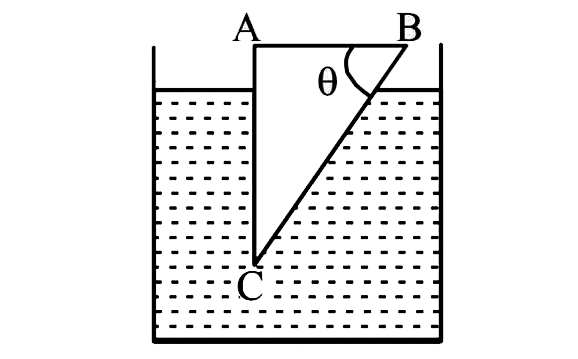 02:47View Solution
02:47View SolutionA convex lens A of focal length 20cm and a concave lens G of focal length 5cm are kept along the same axis with the distance d between them. If a parallel beam of light falling on A leaves B as a parallel beam, then distance d in cm will be
01:54View SolutionA hollow double concave lens is made of very thin transparent material. It can be filled with air or either of two liquids `L_(1)` or `L_(2)` having refractive indices `n_(1)` and `n_(2)`, respectively `(n_(2) gt n_(1) gt 1)`. The lens will diverge parallel beam of light if it is fills with
02:33View SolutionThe size of the image of an object, which is at infinity, as formed by a convex lens of focal length 30 cm is 2 cm. If a concave lens of focal length 20 cm is placed between the convex lens and the image at a distance of 26 cm from the convex lens, calculate the new size of the image
04:52View Solution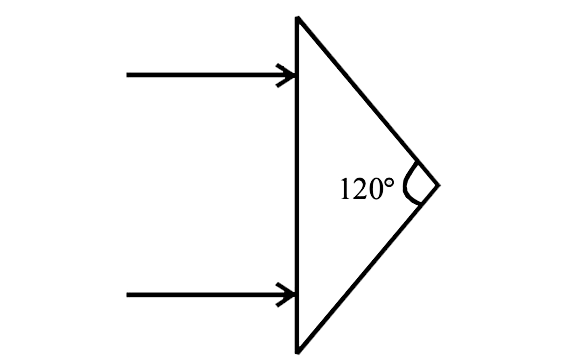
An isosceles prism of angle 120degree has a refractive index 1.44. Two parallel monochromatic rays enter the prism parallel to each other in air as shown. The rays emerge from the opposite faces03:10View SolutionA container is filled with water `(mu=1.33)` up to a height of 33.25 cm. A concave mirror is placed 15cm above the water level and the image of an object placed at the bottom is formed 25 cm below the water level. Focal length of the mirror is
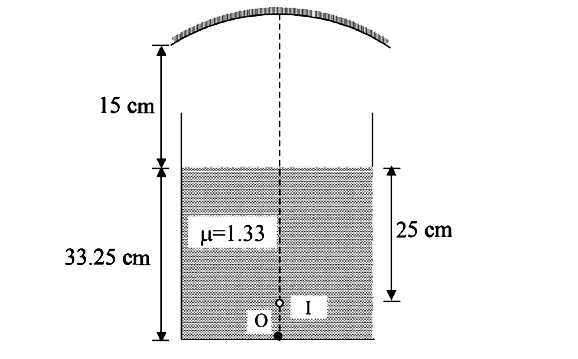 03:47View Solution
03:47View SolutionA concave mirror is placed on a horizontal table, with its axis directed vertically upwards. Let O be the pole of the mirror and C its centre of curvature. A point object is placed at C. It has a real image, also located at C. If the mirror is now filled with water, the image will be.
02:34View SolutionA plane mirror is placed `22.5cm` in front of a concave mirror of focal length `10cm`. Find where an object can be placed between the two mirrors, so that the first image in both the mirrors coincides.
05:30View SolutionAn object is placed in front of a convex mirror at a distance of 50cm. A plane mirror is introduced covering the lower half of the convex mirror. If the distance between the object and the plane mirror is 30cm, it is found that there is no parallax between the images formed by the two mirrors. What is the radius of curvature of the convex mirror?
01:41View SolutionA concave mirror of focal length 10cm and a convex mirror of focal length 15cm are placed facing each other 40cm apart. A point object is placed between the mirrors, on their common axis and 15cm from the concave mirror. Find the position and nature of the image produced by successive reflections, first at the concave mirror and then at the convex mirror.
02:51View SolutionAn object ABED is placed in front of a concave mirror beyond the center of curvature C as shown in figure., State the shape of the image.
 01:23View Solution
01:23View SolutionOptic axis of a thin equi-convex lens is the x-axis. The co-ordinates of a point object and its image are `(-40 cm,1 cm) and (50 cm,-2 cm),` respectively. Lens is located at
04:07View SolutionAn equiconvec lens of glass `(mu_(g)-1.5)` of focal length `10cm` is silvered on one side. It will behave like a
05:07View SolutionThe magnification of an object placed it front of a convex lens of focal length `20cm` is `+2`. To obtain a magnification of `-2` , the object will has to be moved a distance equal to
03:44View SolutionThe focal length of a thin convex-lens is 30cm. At a distance of 10 cm from the lens there is a plane refracting surface of refractive index `3//2` Where will parallel rays incident on lens converge?
 01:39View Solution
01:39View SolutionDistance of an object from the first focus of an equi-convex lens is `10 cm` and the distance of its real image from second focus is `40 cm.` The focal length of the lens is
02:48View SolutionA point object is placed on the optic axis of a convex lens of focal length `f` at a distance of `2f` to the left of it. the diameter of the lens is `'d'` . An eye is placed at a distance of `3f` to the right of the lens and a distance `h` below the optic axis. The maximum value of `h` to see the image is
02:45View SolutionA point object O is placed at a distance of `20 cm` from a convex lens of focal length `10 cm` as shown in the figure. At what distance x from the lens should a convex mirror of focal length `60 cm,` be placed so that final image coincide with the object?
 02:29View Solution
02:29View SolutionThe distance between two point sources of light is `24cm.` Find out where would you place a converging lens of focal length `9cm,` so that the images of both the sources are formed at the same point.
03:55View SolutionTwo thin symmetrical lenses of different nature and of different material have equal radii of curvature `R=15cm`. The lenses are put close together and immersed in water `(mu_(w)=4//3)` . The focal length of the system in water is 30cm. The difference between refractive indices of the two lenses is
02:31View SolutionAs the position of an object `(u)` reflected from a concave mirrorr is varies, the position of the image `(v)` also varies. By letting the `u` changes from `0` to `+oo` the graph between `v` versus `u` will be
02:32View SolutionThe graph between the lateral magnification `(m)` produced by a lens and the distance of the image `(v)` is given by
01:52View Solution
Problems Based On Mixed Concepts questions and complete solutions for chapter GEOMETRICAL OPTICS of A2Z PHYSICS (HINGLISH) of Class 12
